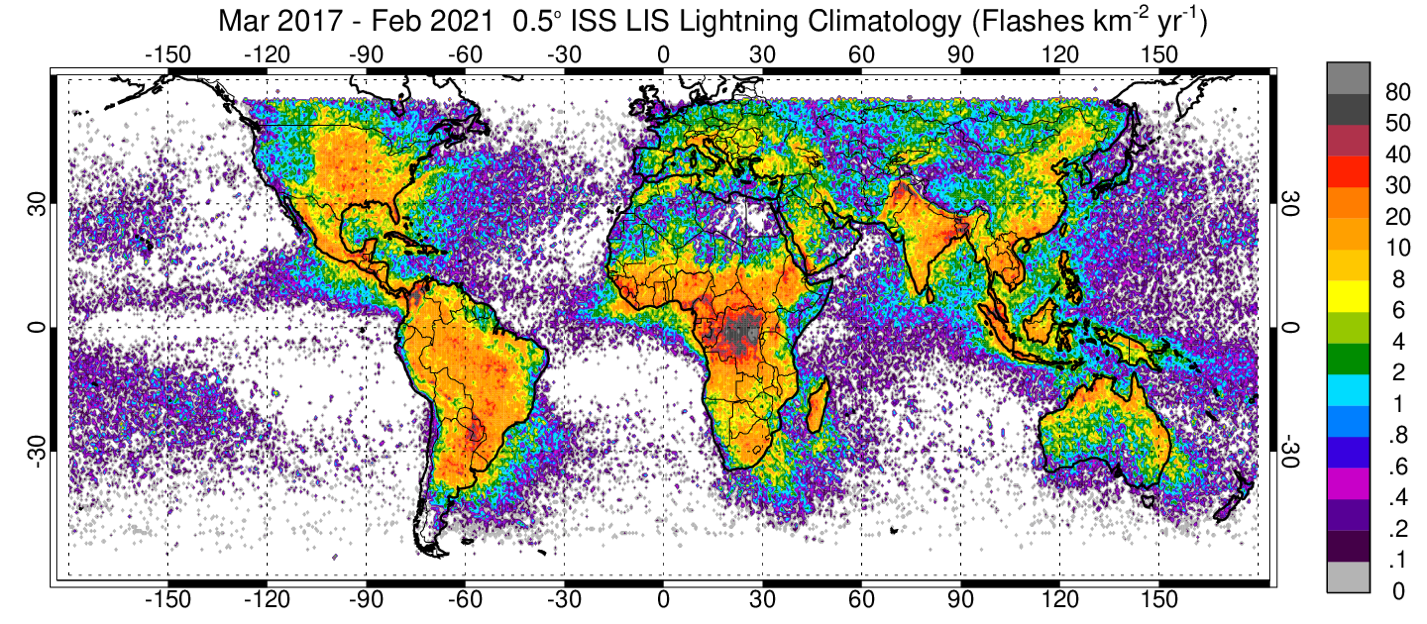The International Space Station Lightning Imaging Sensor (ISS LIS) recently completed the milestone of four years on orbit. ISS LIS has operated nearly continuously since it was launched and installed on the ISS in February 2017. ISS LIS extends the long-term Tropical Rainfall Measuring Mission (TRMM) LIS climatology (1997-2015) both in time and space (from +/-38° latitude to now +/-55° with ISS LIS). For approximately the last year the ISS has been in a phase-repeating orbit that has impacted certain Earth-observing payloads, but the ISS LIS team has determined that the accuracies of seasonal and annual climatologies from LIS are not affected. The ISS is expected to change altitude slightly to exit the phase-repeating orbit in the near future.
The four-year global climatology of lightning from ISS LIS is shown in the figure below. Changes in thunderstorm behavior at middle and higher latitudes are of special interest, as they had not been sampled from space since the Optical Transient Detector (OTD) during 1995-2000. ISS LIS data are now being incorporated into the 20+ year combined TRMM LIS/OTD climatology to examine these changes in more detail. ISS LIS is expected to relocate on the ISS in early 2022, and then continue operations until at least late 2023.
